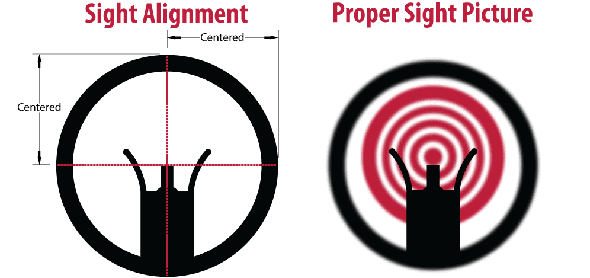Walk away quietly in any direction and taste the freedom of the mountaineer. Camp out among the grasses and gentians of glacial meadows, in craggy garden nooks full of nature's darlings. Climb the mountains and get their good tidings, Nature's peace will flow into you as sunshine flows into trees. The winds will blow their own freshness into you and the storms their energy, while cares will drop off like autumn leaves. As age comes on, one source of enjoyment after another is closed, but nature's sources never fail. - John Muir, Our National Parks
The Civilization Affliction
 |
| The Ever-Growing Urban Sprawl |
All the technology and the industry and their by-product, pollution, be it noise, air, light, water, or otherwise, drains me of vigor and humor and makes me dream of homicide and destruction. The most insidious quality about the poison that is civilization is its capacity to sneak up on me and erode my well-being at such a gradual pace that I do not realize the injury until it has bored a deep wound into my psyche.
Once I have diagnosed my malady, I know exactly which remedy to prescribe: a dose of wilderness. When I reconnect with nature by camping, hiking, or just simply sitting on a log surrounded by the serenity of the forest, my mind and body are rejuvenated. The process is much like molting; just as the snake sheds its scaly skin, I slough off the bitter husk of civilization.
If it were possible to untangle myself from the greasy tendrils of civilization, I would leave it all behind and find a nice piece of wilderness to permanently call my home, my own Walden Pond. Until that dream can be fulfilled, I will just be content with integrating nature into my life whenever and wherever I can. Bike in the local state park. Camp in the national forest. Take vacations to wild places.
Of Fjords & Friluftsliv
 |
| Geiranger Fjord, Norway |
The generic meaning of friluftsliv is more about living in a manner that is spent appreciating and experiencing nature. What specifically that experience and appreciation takes form as is different for everyone, with traditions varying from family to family. It also seems to be unconcerned with accomplishment. Reaching the summit of a difficult climb is less important than feeling the texture of the mountain. Nature is not something to be conquered, but something to embrace, to become a part of.
Friluftsliv is even a course Norwegian students can take in school and one can even receive a degree[1] in it from Volda University. While friluftsliv is entrenched in Norwegian culture today and their Nordic outdoorsman (and Viking) heritage certainly made it its mark on their Scandinavian DNA, the concept is rather recent in their history.
The culture of friluftsliv was nurtured by the Outdoor Recreation Act of 1957 [2] wherein the ancient Nordic tradition of allemannsretten was made law. Allemannsretten loosely translates to "freedom to roam" but can be read literally as "all men's right." This tradition-made-law allows anyone access and passage to private uncultivated land (or even cultivated land during winter months) and the right to camp for two days (only on uncultivated property) as long as reasonable rules are abided by.
Allowing anyone to roam the wilderness has helped Norway develop a culture of nature in a nation where everyone can see the mountain, forest, and ocean with little effort. Perhaps friluftsliv is the secret to Norway's consistent appearance at the top of the World Happiness Report [3] and Human Development Index [4].
No Trespassing
 |
| Violators Will Be Shot, Survivors Will Be Shot Again |
This cultural DNA can no doubt be attributed to Manifest Destiny [5] and the Right of Discovery [6][7] before it that many Christian Europeans declared when establishing colonies in the already populated Americas. After a few centuries of warring with the indigenous peoples and with each other, a sense of territorial defense was ingrained into our society.
I'm not saying this is good or bad, just that it is different from Norwegian sentiments. Besides, I can certainly appreciate wanting to keep Americans out of my backyard. However, American cultural mores like our preference for large personal space and keeping property private make another American cultural touchstone even more important.
America's Best Idea
 |
| Roosevelt Arch at Yellowstone National Park |
Unlike Norway, where everyone seems to have a mountain-rimmed fjord in their backyard, the various biomes of America are spread far and wide, increasing the hardship to get out and experience various parts of nature. However, our wild places are no less spectacular and are more diverse: from tropical wetlands to high deserts and from temperate rainforests to snowy peaks. America has it covered.
It is a challenging task to describe my love for these wild places that have been set aside for everyone's enjoyment. National (and state) parks promote the American version of friluftsliv and I am grateful for the accessibility. I hope they stand strong as unmovable objects against the unstoppable force that is the inevitable march of civilization because I desperately require them for healthy escapes.
References
[1] Friluftsliv Bachelor Degree at Volda University[2] Outdoor Recreation Act of 1957
[3] Columbia University Earth Institute's World Happiness Report
[4] United Nation's Human Development Index (Wikipedia synopsis)
[5] Manifest Destiny
[6] Papal Doctrine of Discovery
[7] SCOTUS Discovery Doctrine
[8] The National Parks: America's Best Idea on PBS




























